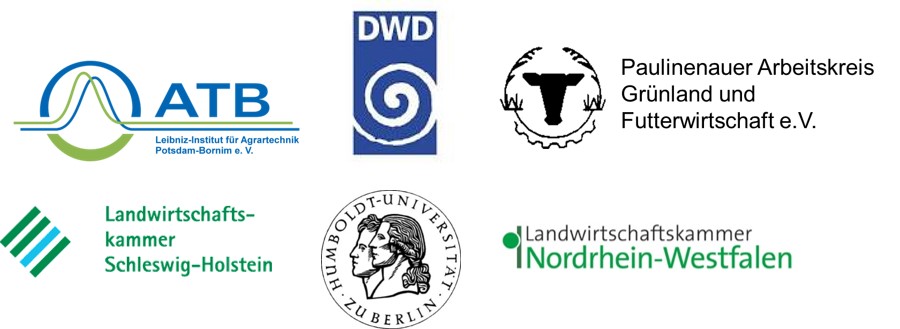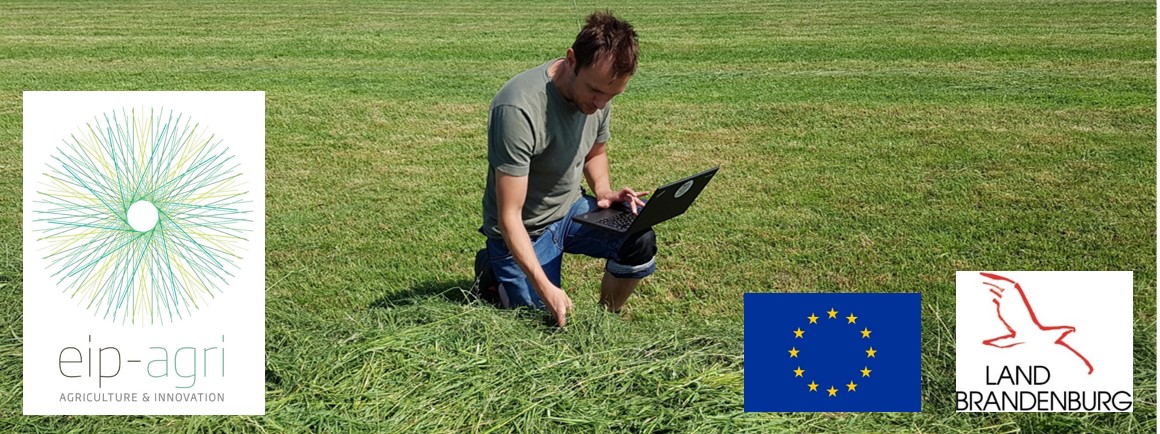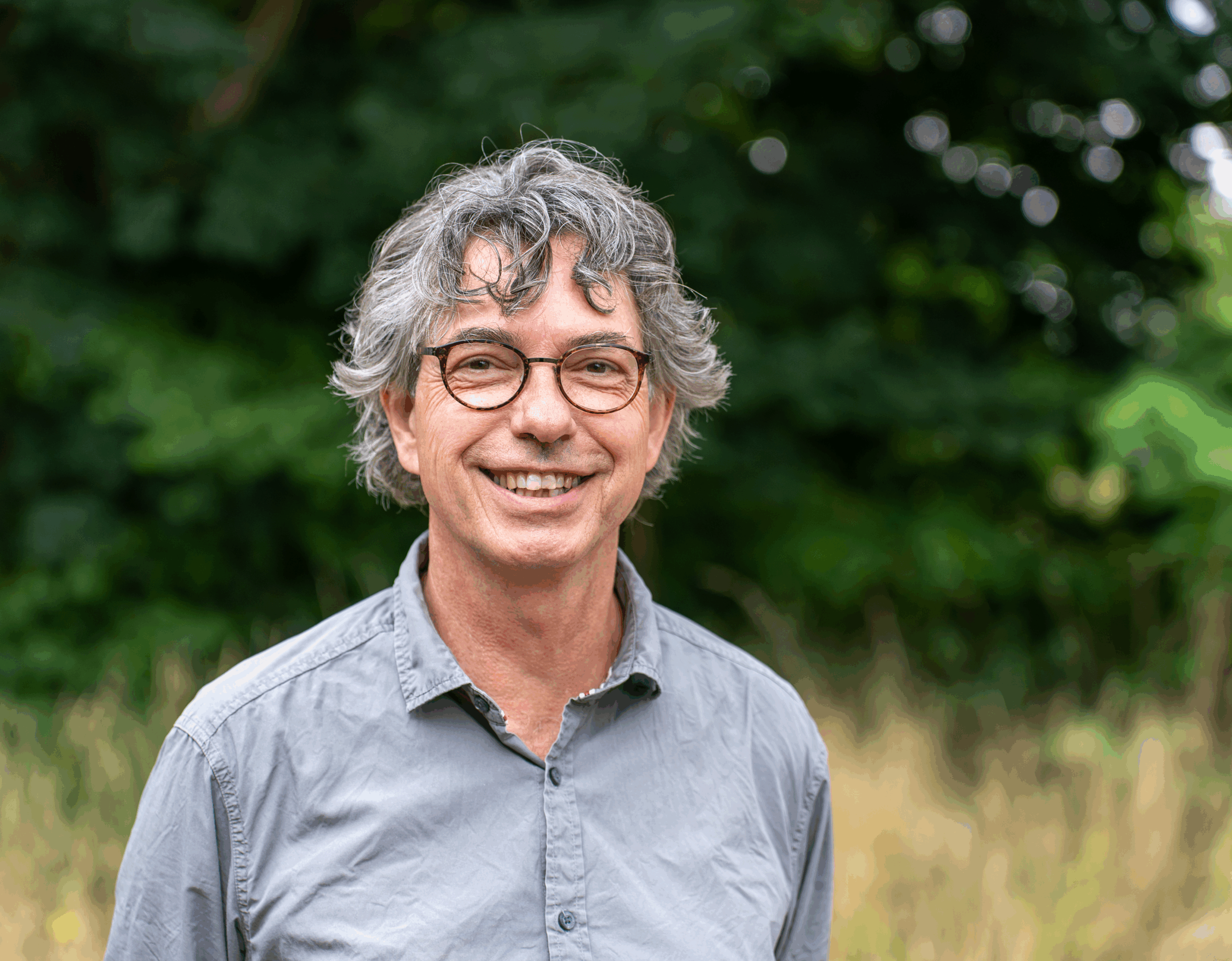The Q2GRAS project is funded by the European Agricultural Fund for Rural Development (EAFRD) as part of the European Innovation Partnership “Agricultural Productivity and Sustainability” (EIP-AGRI).
07.04.2017 – 31.03.2020
Agrargenossenschaft Lüchfeld e.G., Agrargenossenschaft Münchehofe e.G., agt Agrar GmbH Trebbin, Grüpa-Hof GbR , JAG- Jüterboger Agrargenossenschaft e.G., Leibniz-Zentrum für Agrarlandschaftsforschung (ZALF) e. V., Landwirtschaftlicher Lehrbetrieb Siegfried & Eckhard Leinitz GbR
What is the aim of the project
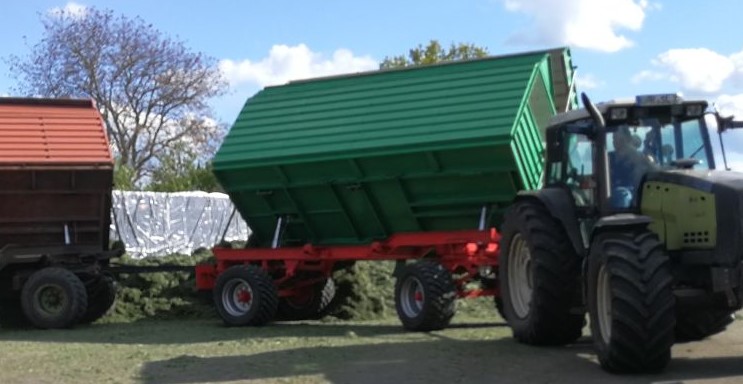
Alongside maize silage, grass silage is the most important basic feed in cattle farming. A high feed quality of grass silage is a prerequisite for high animal performance, animal health and low feed costs. Many years of analyses have shown that there are considerable quality problems, particularly with regard to the key quality parameters (dry matter, crude protein and energy content).
Based on the results of scientific research, a dynamic software forecasting tool was developed together with practical farms as part of the innovation project. The innovative approach of the project is that a standardised software forecasting tool enables the farmer to exploit unused optimisation potential with regard to silage quality in the grassland and silo in the current marketing year, thereby reducing the feed costs for dairy cattle farming on the farm and increasing the profitability of the farms.
What does this have to do with the European “Farm to Fork” strategy?
Q2GRAS supports agricultural on-farm feed production with its innovative apps. The apps help reduce the purchase of (protein) feed, optimize the use of local resources, and improve the agricultural on-farm circular economy. This strengthens sustainable food production.
What is the role of agrathaer?
agrathaer was responsible for leading the operational group. Primarily, agrathaer managed and partly undertook the software development. In workshops, the tools were presented and tested together with future users to develop action recommendations and informational materials for farmers and advisors. Additionally, agrathaer was responsible for the entire execution of trials on agricultural farms, including trial evaluation, data entry, data maintenance, and data preparation.
Q2GRAS Blog
Final Presentations at the EIP Online Event on 23.09.2020
On Wednesday, September 23, from 9:30 to 12:30, the results and experiences from the Q2Gras project were presented by Dr. Pickert and Dr. Hecker.
Final Presentation (PDF 2.5 KB)
Additionally, Prof. Hillmann from Humboldt University of Berlin delivered a lecture titled: “How do Digitalization and Animal Welfare Fit Together?”
The Innovation Service Provider for European Innovation Partnerships in Brandenburg (IDL-EIP) invited members of the Operational Group, their network, and practical partners to the event.
If you are interested, you can participate in the event via Zoom free of charge. Please register by September 9, 2020, by sending an email to info@idl-bb.de. For registration, please provide your name, first name, OG/EIP project (if applicable), organization, and email address.
Further details about the program (PDF, 87 KB)
Brandenburg Apps for Healthy Animal Feed
At Schloss Ribbeck in Nauen, two new apps, WiltExpert and SiloExpert, were presented on February 11, 2020. These applications aim to improve silage quality. A team of farmers, scientists, and software designers worked hand in hand for three years to ensure the apps are both scientifically sound and practical in use. Data from experimental series dating back to the 1980s were combined with new data and current agricultural requirements. The interdisciplinary team behind the app development consists of six agricultural enterprises, the Leibniz Centre for Agricultural Landscape Research (ZALF) e. V., ontopica, and led by agrathaer GmbH.
Grass silage is a valuable feed for dairy farming. In 2016, the Brandenburg State Control Association found that the quality of grass silage was not as good as it could be under the given conditions. To fully exploit the potential of farm-owned grass silage, the WiltExpert and SiloExpert apps complement the farmers’ expertise.
On February 11, 2020, farmers, advisors, and interested parties had the exclusive opportunity to test and discuss the apps. Additionally, documentary films were shown about the joint development of the apps and how farms can use these applications.
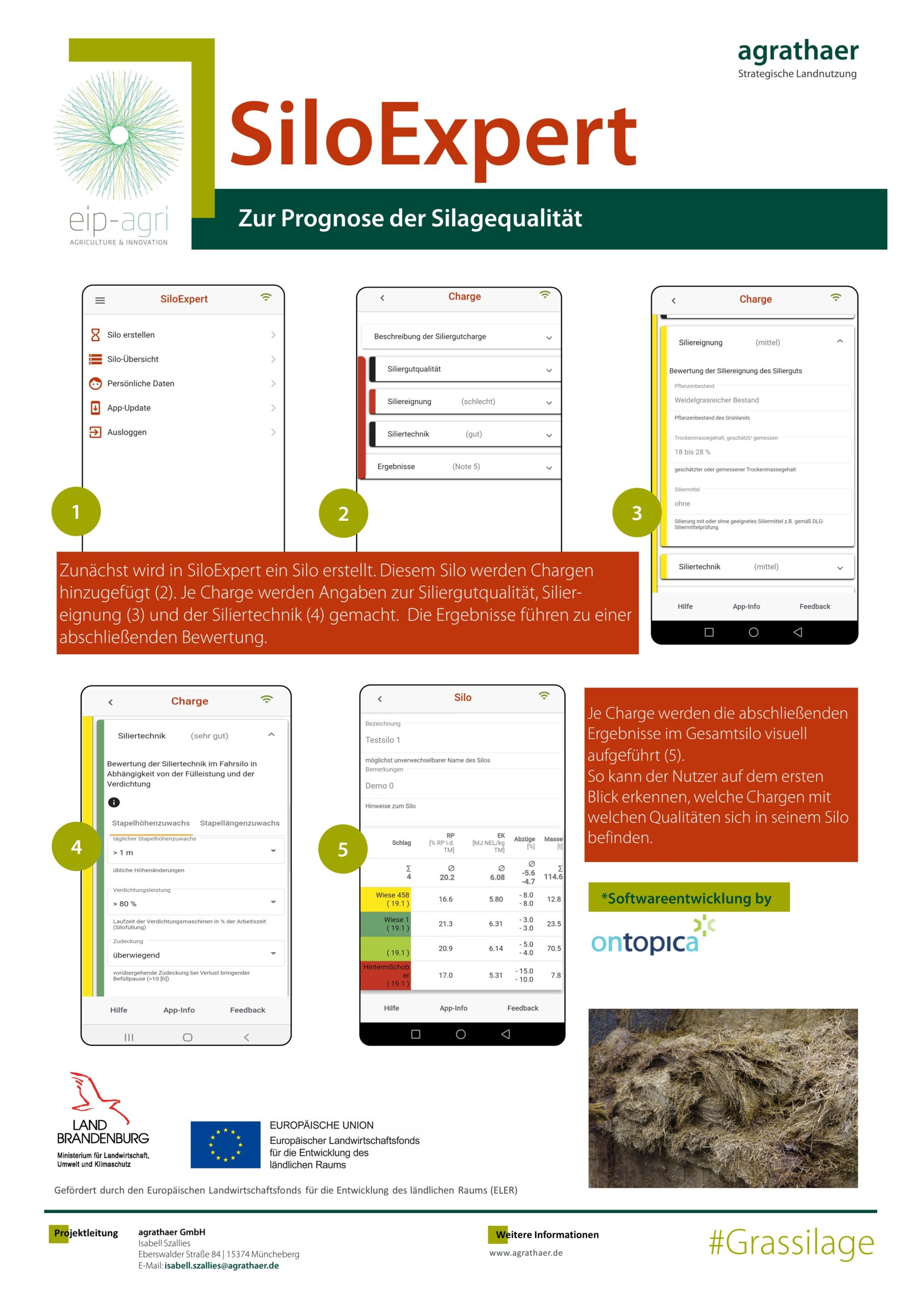
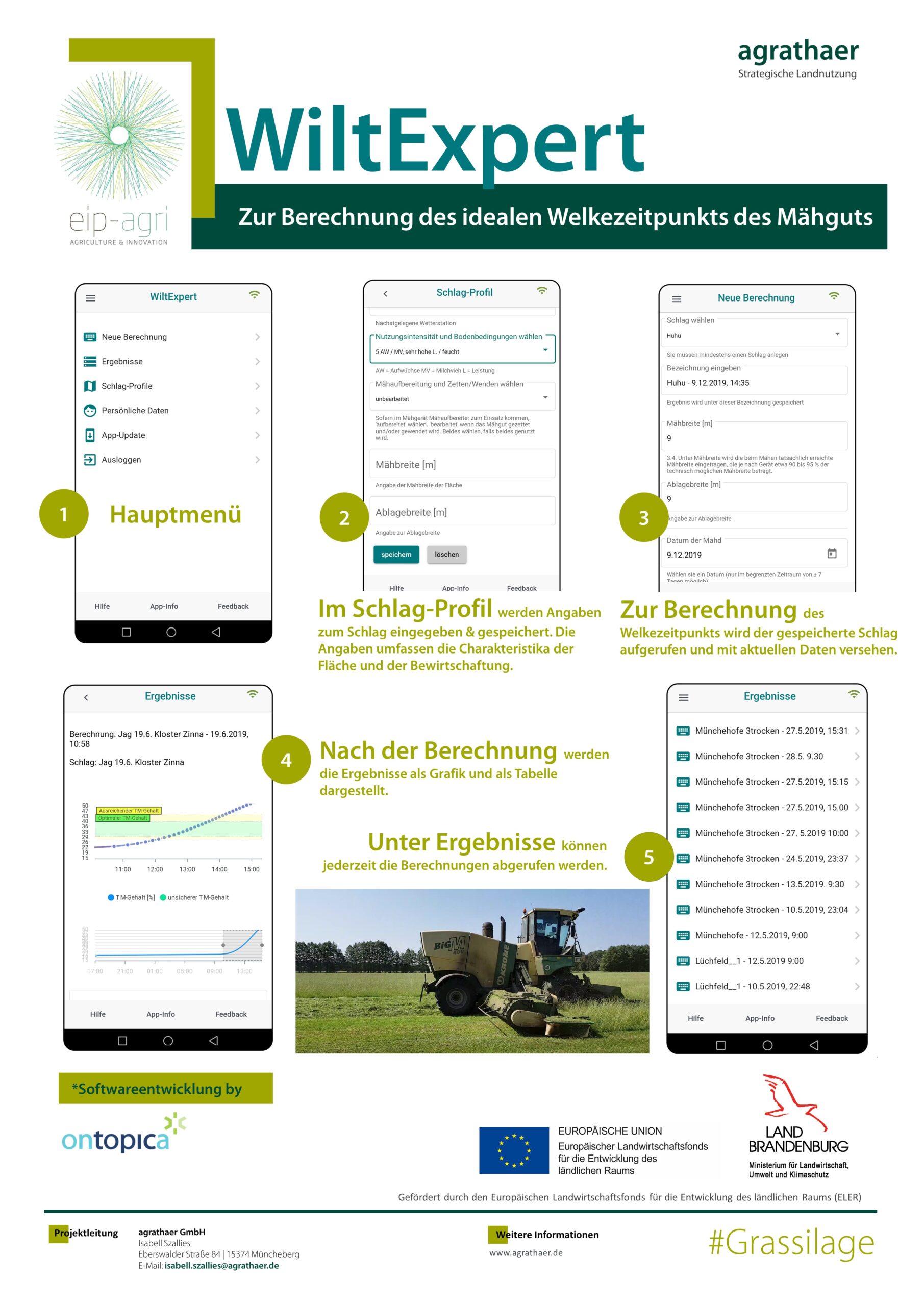
Further information can be found in the Invitation to the Demonstration Event “Smart Grass Silage”.
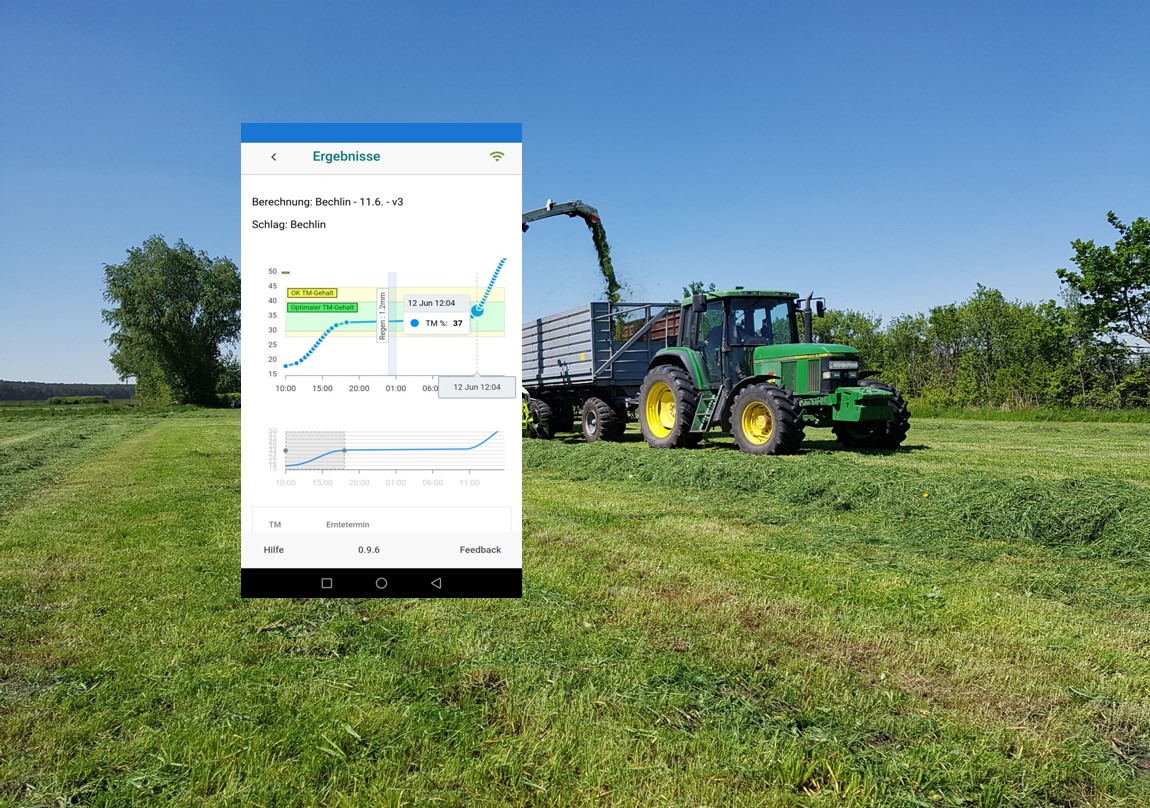
Brandenburg Silage Apps Successfully Presented on the International Stage in Hannover
On November 12, the app applications developed in the Q2GRAS project were presented to the audience at Agritechnica during the “Crop Production Live” specialist forum. Moderated by Dr. Klaus Hünting (Chamber of Agriculture NRW), Dr. J.-Martin Hecker (agrathaer) and Dr. Jürgen Pickert (ZALF) presented the fundamental ideas, from requirements to the design of the two app applications. The highlight of the presentation was the testimonials from farmers who co-developed the app and demonstrated its application in their daily work. Despite the late hour, the approximately thirty participants asked lively questions after the presentation, and an engaging discussion about the technical details of the apps ensued.
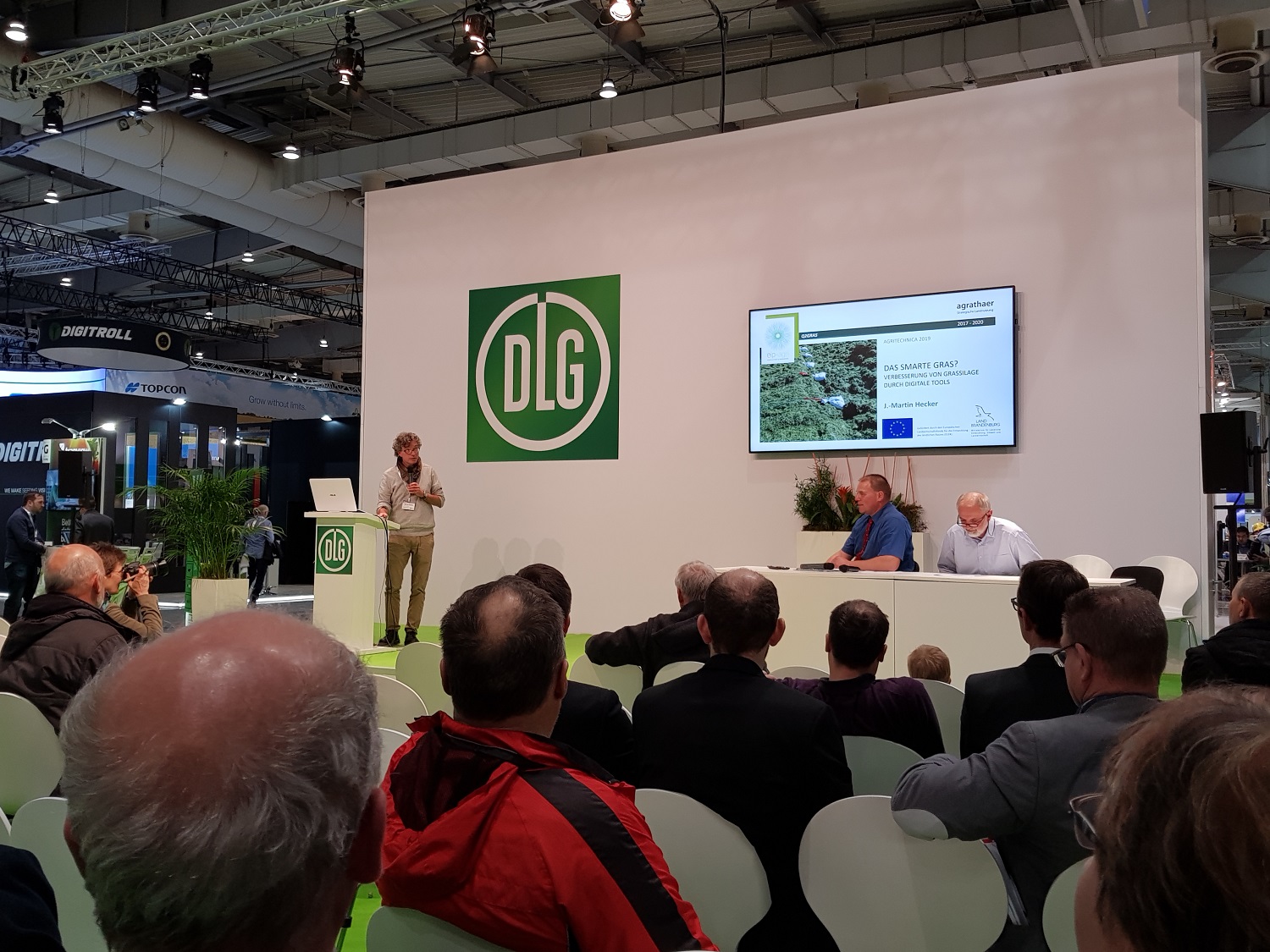
We Present WiltExpert and SiloExpert at Agritechnica in Hannover
In the lecture “Smart Grass? Improving Grass Silage through a Digital Tool,” Dr. Jürgen Pickert (ZALF) and Dr. J.-Martin Hecker (agrathaer GmbH) presented the two apps WiltExpert and SiloExpert in the Crop Production forum.
When: Tuesday, November 12, from 16:30 – 17:30
Where: Hannover, Agritechnica Exhibition Grounds. Hall 15, Stand G30 in the Crop Production Live Forum
WiltExpert
With the WiltExpert app, farmers can improve their grassland management for grass silage production. Based on a few plot-specific data points, the app predicts the wilting process of the specified grassland. Indicating an ideal dry matter range allows farmers to plan their resources accordingly and get the best out of their grassland.
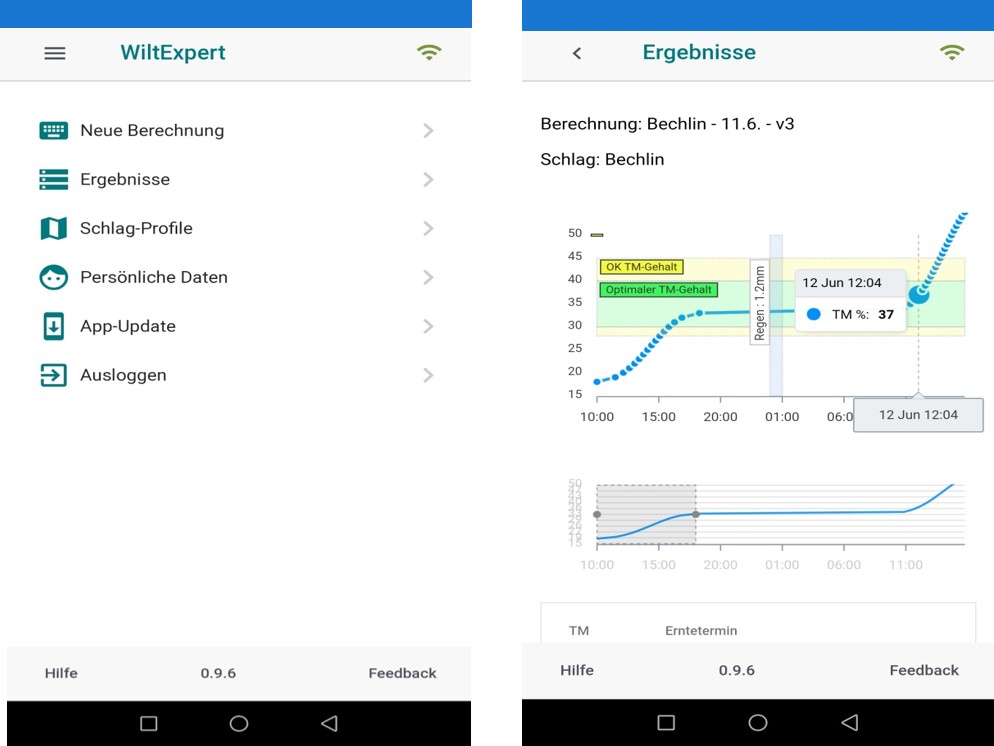
SiloExpert
With the SiloExpert app, farmers can improve their grass silage and the ensiling process. The app assists farmers in organizing their plots by predicting the quality of the silage. With minimal input, farmers can assess relevant aspects to improve their grass silage.
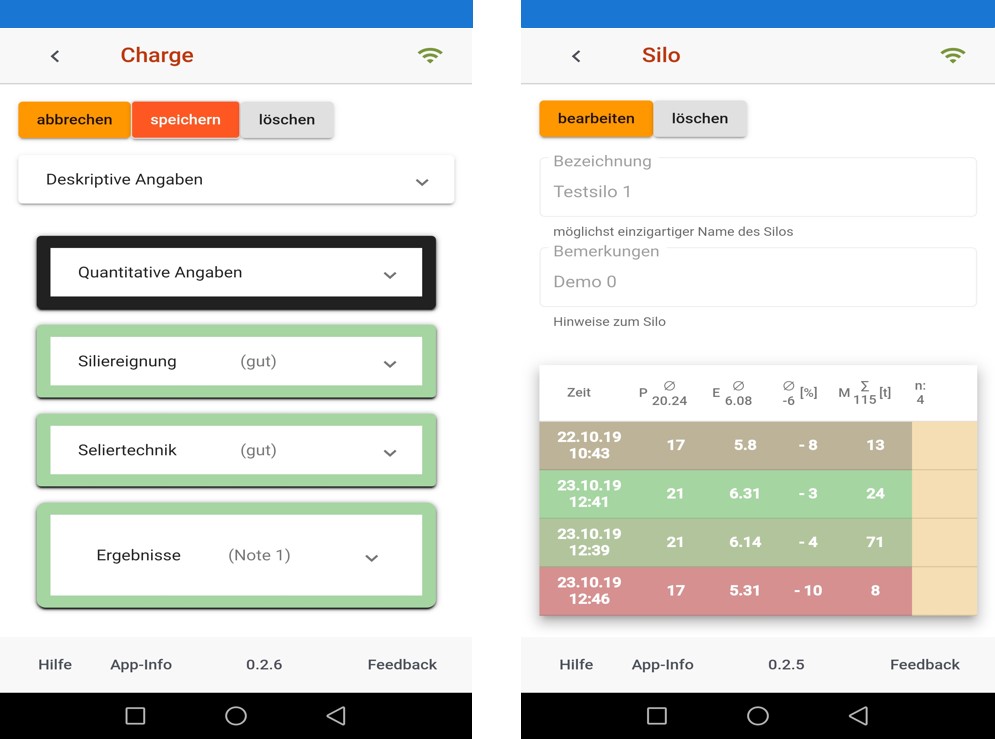
More Value for Cows through Q2GRAS – Project Presentation to Partners
At the invitation of the EIP project Kuh-Mehr-Wert Navigator , Isabell Szallies presented the project and the WiltExpert app to the practical partners of the other project on July 11 in Ketzin (Havel).
State Secretary Dr. Carolin Schilde Visits the Project
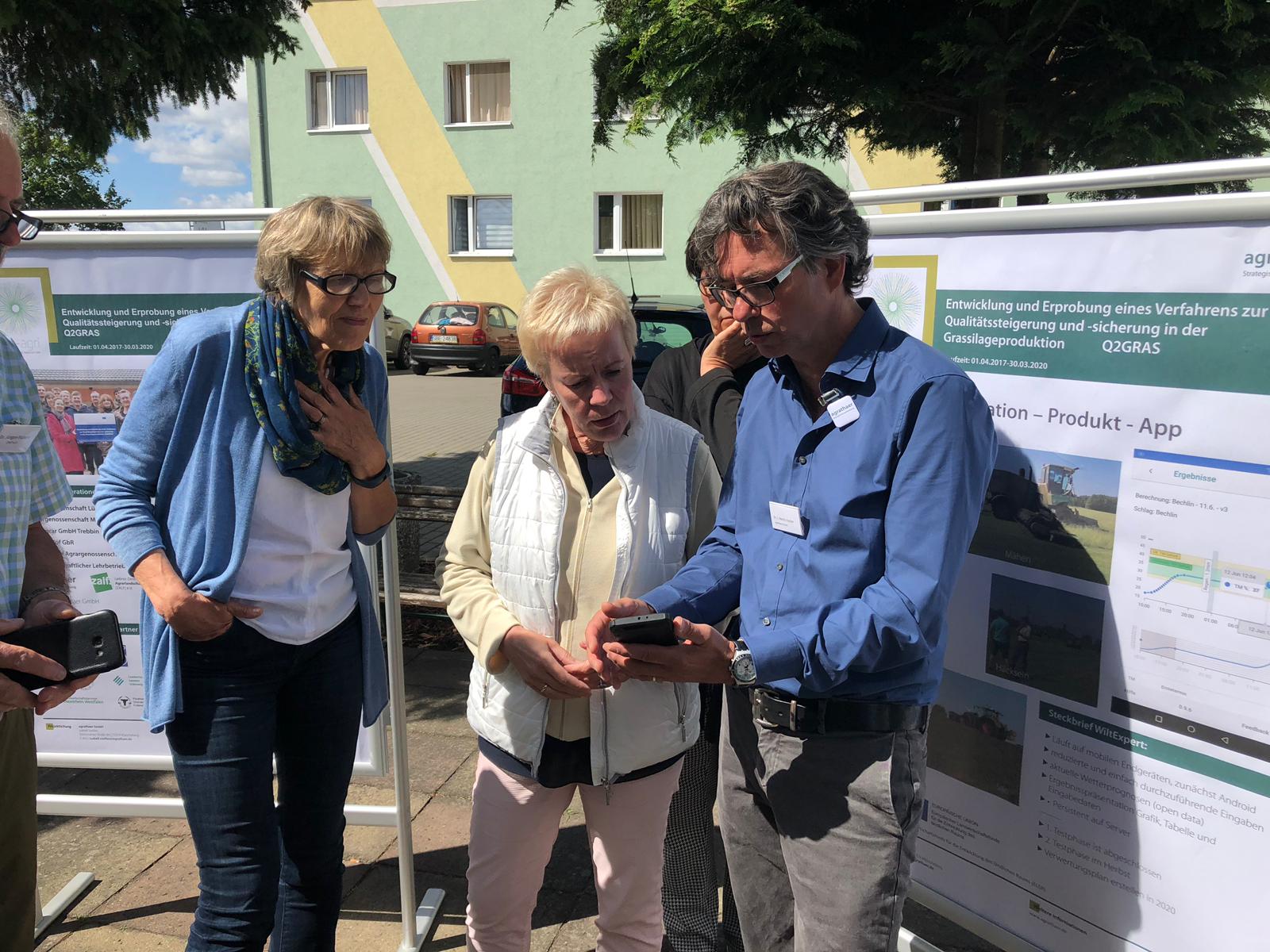
On July 3, 2019, the State Secretary of the MLUL, Dr. Carolin Schilde, visited the Trebbin Agricultural Cooperative to get to know the OG and the project. Dr. Thomas Gäbert opened the meeting with a tour of the farm. The participants engaged in lively discussions about the requirements of modern agricultural enterprises and the challenges of grass silage production while visiting the calves and grass silos. Subsequently, Dr. Martin Hecker demonstrated the functionality of the “WiltExpert” app. It was an all-around successful meeting that left all participants satisfied. Thank you very much!
The WiltExpert App – How Did the Trial Phase Go?
After a six-week trial phase, Martin Hecker and the farms met to provide feedback on the current app version. The handling met expectations, and the app was already useful in the current season. A few improvements still need to be made, which were very specifically identified. Thank you for the feedback; this way, a practical version of WiltExpert will soon be available!
Innovative Dairy Farming in Brandenburg – EIP Group Exchange
On June 11, four Brandenburg EIP groups gathered at the Neuseddiner See Folk High School to exchange ideas on dairy farming. After presenting their respective projects and goals, participants discussed potential synergies and engaged in professional exchanges. Q2GRAS was also represented with a presentation and practitioners.
Q2GRAS in the Spreewald – Presentation of Results at the 2nd Grassland Day

On May 14, the 2nd Grassland Day in southern Brandenburg took place in Göritz, organized by the South Brandenburg District Farmers’ Association e.V. Q2GRAS also introduced itself to the interested farmers. In a half-hour presentation and discussion, the problem and solution were presented to the 14 participants. Nearly half of the farms present also produce grass silage and provided valuable input and questions that help improve the WiltExpert app. There was also great interest in learning how the app can be used in the future.
Q2GRAS at BraLa in Paaren/Glien
During the Brandenburg Agricultural Exhibition from May 9 to 12, 2019, EIP projects presented their results to the public at the expert forum. On May 10, Q2GRAS also presented its goals and the “WiltExpert” app to the interested audience.
The 2019 Season Begins
Start of sampling and first use of the WiltExpert app

With the cut on May 8, 2019, in Trebbin and Jüterbog, the sampling season officially began for the “Q2GRAS” project team. The revised version of the “WiltExpert” app is being used, with active mowing, threshing, chopping, and ensiling underway. Our project staff member Martin Hecker is once again on-site to support our farms.
4th OG Meeting in Potsdam – The WiltExpert App is Here!
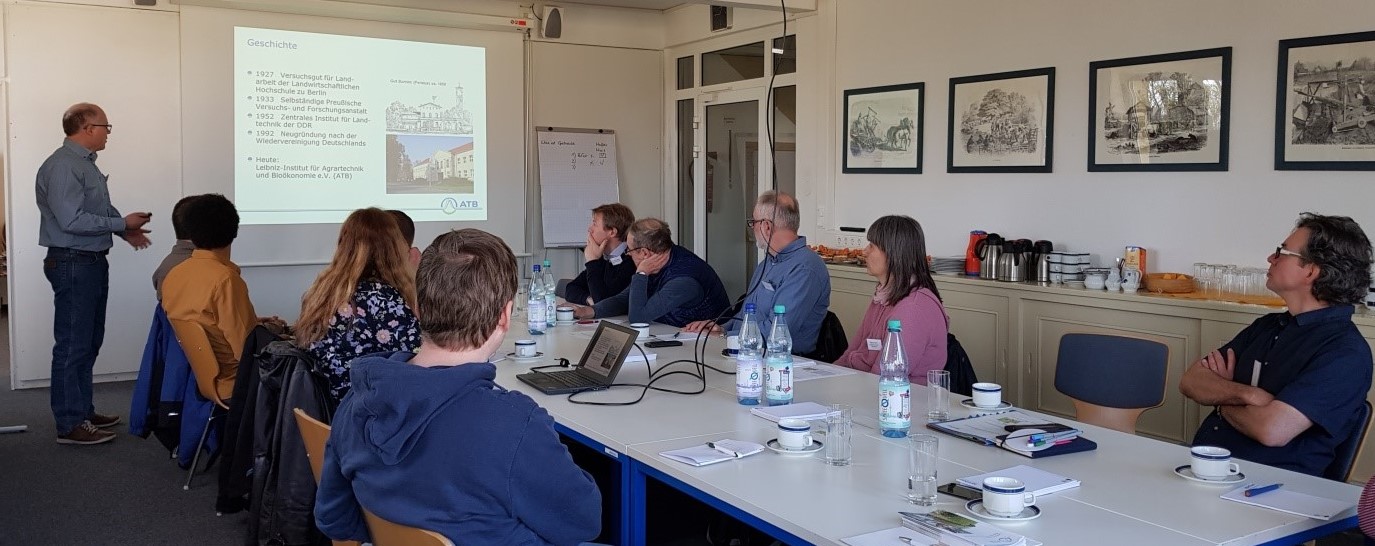
On April 2, the Operational Group and its partners met at the associated partner ATB to discuss the current project status and prepare for the 2019 sampling phase. The current status of the “WiltExpert” app version was presented, eagerly tested, and discussed. The implementation of SiloExpert and the tasks for 2019 were also addressed. One thing is clear: 2019 will be an important year!
EIP Meeting at Neuseddiner See – Experience Exchange of Operational Groups
On February 12, the 3rd experience exchange of OGs from Berlin and Brandenburg on knowledge transfer took place.
Isabell Szallies from agrathaer demonstrated, using the EIP project Q2GRAS as an example, how disseminating results into agricultural practice can be successful. As a rule of thumb, she advised other projects: Start early, use your contacts, and always work target group-specific.
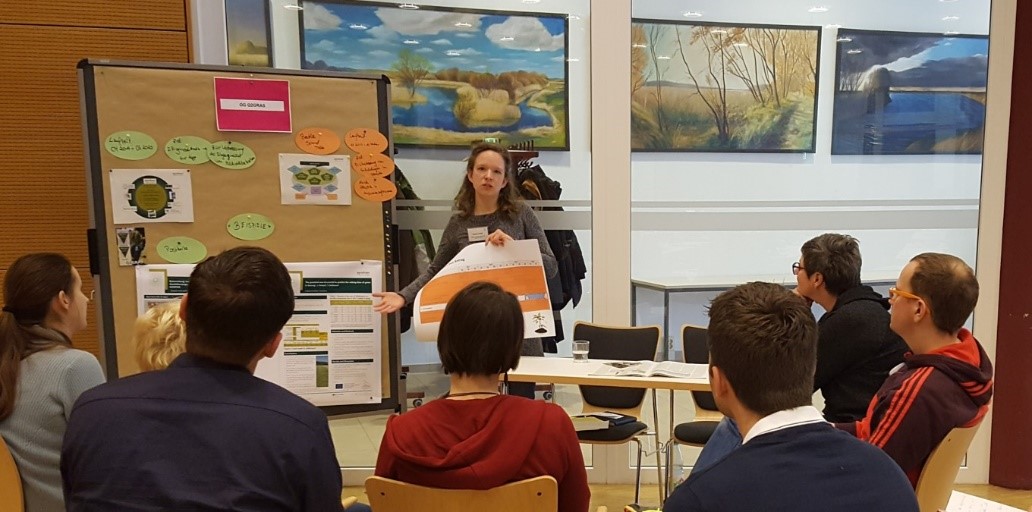
Q2GRAS at the Dairy Cattle Breeders’ Day
On January 10, 2019, the Berlin-Brandenburg Cattle Breeding Association organized the “Dairy Cattle Breeders’ Day,” where guests could learn about Q2GRAS in addition to topics on calf and young cattle rearing. Visitors could obtain information at our information stand and engage in discussions with Dr. J.-Martin Hecker.
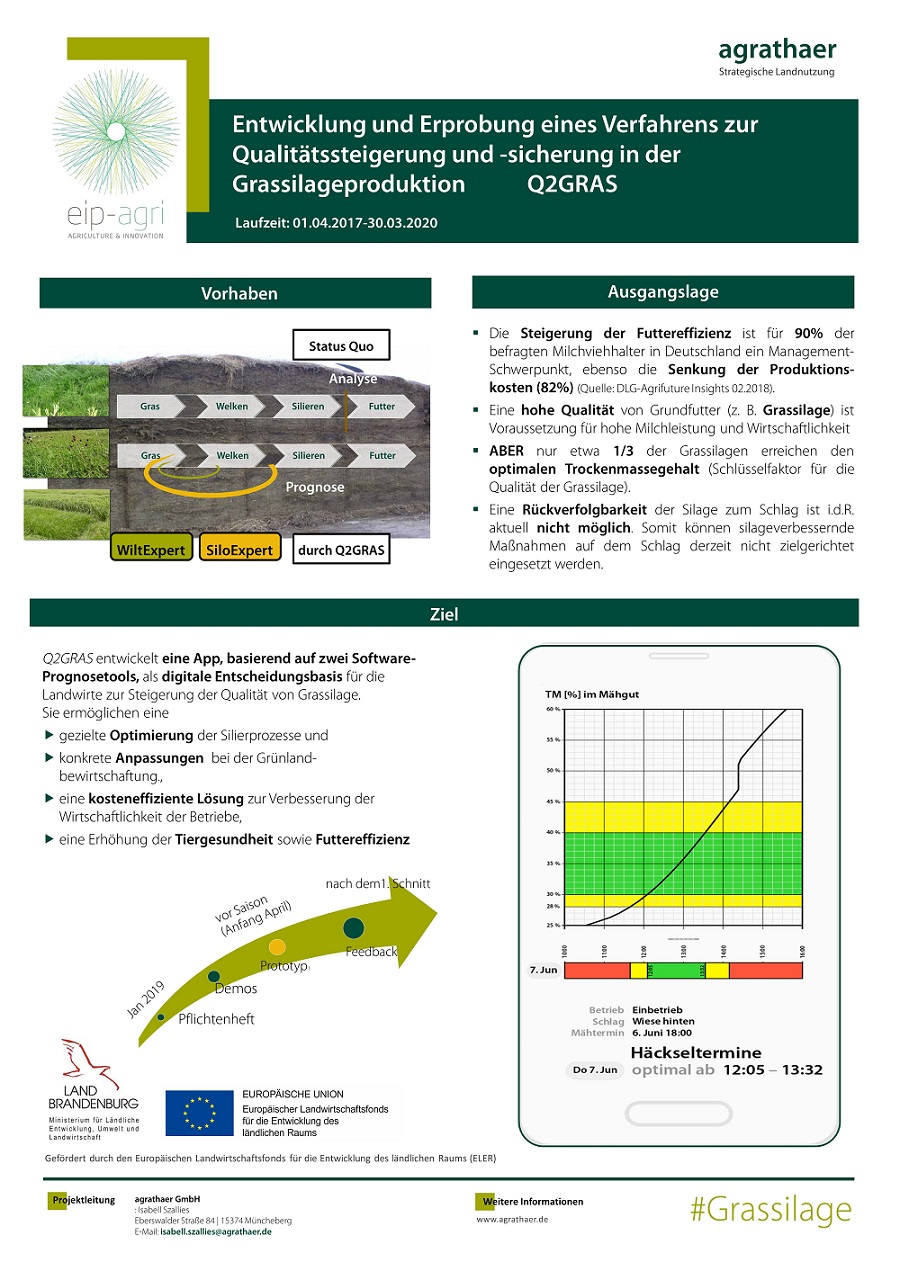
3rd OG Meeting with Software Development
In early November 2018, the “Q2GRAS” Operational Group met for the third time. Dr. J.-Martin Hecker was introduced as the new scientific staff member and expert in digital implementations. With the support of associated partners, a joint workshop was held to discuss the requirements, possibilities, and needs of the app solution for the two software forecast tools, and ideas were collected. The workshop was conducted under the guidance of app developer Christoph Okpue from ontopica GmbH.
Users expressed the desire for a comprehensible, field-usable application that can determine the best chopping time with minimal effort in the shortest possible time. This requires clear and minimized queries, a flexible technical solution, and ideally a linkage to already existing data from the farms.
In the afternoon, participants creatively engaged with example “mock-ups” to visualize their ideas and jointly formulate requirements. The workshop results form the basis for the specification sheet and thus the application requirements.
Third Grassland Growth 2018
In early July, the third grassland growth for grass wilt silage with moderate yield was harvested at the practical farm in Klein Mutz in the Oberhavel district.
The “WiltExpert” wilting model was used, which allows predicting the wilting duration from mown grass until reaching a dry matter content necessary to ensure optimal ensiling conditions.
First Sampling 2018
It is mowing time in Brandenburg. The first samples for 2018 are scheduled. Current data is being collected to validate the WiltExpert and SiloExpert tools. Dry matter contents are being determined, and new balance bag trials are starting.
2nd OG Meeting
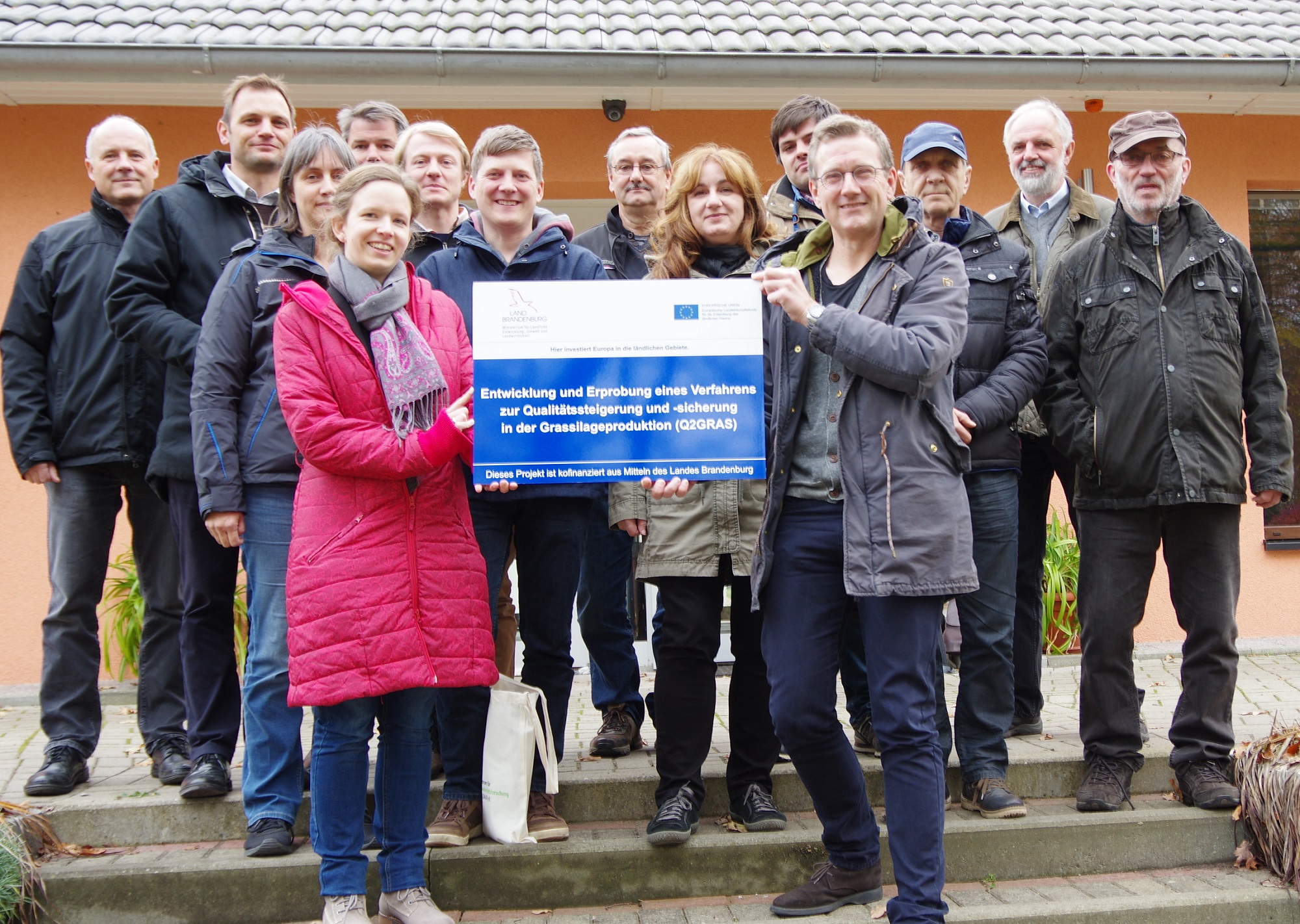
Shortly before Easter, the Operational Group and associated partners met again in Paulinenaue to discuss the current project status and plans for 2018.
- How did the sampling in 2017 go?
- And what do our collected data say about SiloExpert?
- During the second OG meeting, these questions were discussed together with our farmers and associated partners.
Conclusion: Some balance bags are still in the silos, so not all results were available. The first adjustments for WiltExpert were positively received. Thus, the sampling for 2018 can begin!
Kick-off Event
On November 14, 2017, the kick-off event for the Q2GRAS project took place in Paulinenaue. Fourteen project partners contributed to the meeting with lively discussions, coordination processes, and the presentation of initial results.
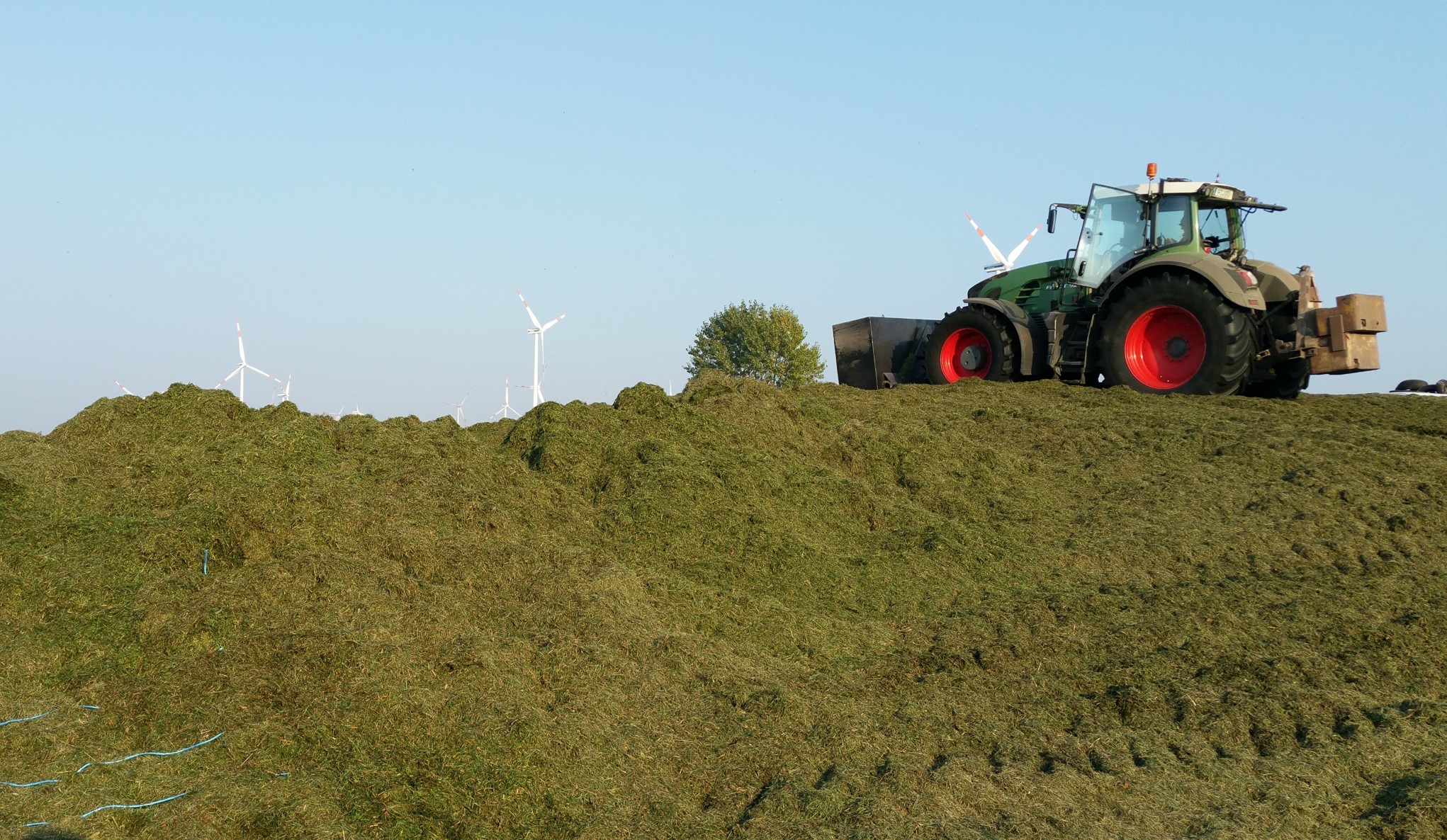
Project Information
Development and Testing of a Procedure for Quality Improvement and Assurance in Grass Silage Production (Q2GRAS)
In the Q2GRAS project, agrathaer, together with ZALF (LSE, Research Station Paulinenaue), is developing a procedure for improving and ensuring quality in grass silage production, which is being tested in six Brandenburg practice farms.
Grass silage quality plays a crucial role in dairy farming. It affects milk yield, animal health, and farm economics. Studies have shown that grass silages often have unsatisfactory quality: energy content is too low or dry matter contents are insufficient. To maintain the productivity of the regional dairy industry, a procedure for improving and ensuring quality in grass silage production is to be developed and tested.
This involves two sections of the grass silage process chain. A forecasting tool calculates the best mowing date to achieve the optimal dry matter content. The second tool predicts silage quality during the ensiling process, eliminating the need for subsequent sampling. The two tools allow precise traceability of the silage back to the grassland, enabling targeted adjustments to process workflows to improve silage quality.
The two forecasting models for the ensiling date and silage quality are being tested in practical trials. Data on weather and harvesting and ensiling conditions are being collected at six Brandenburg practice farms and the Paulinenaue research station. The predicted data are compared with the actual data from the farms. These insights and experiences from practical application are incorporated into the development of the dynamic standardized forecasting tools.
Associated Partners:
